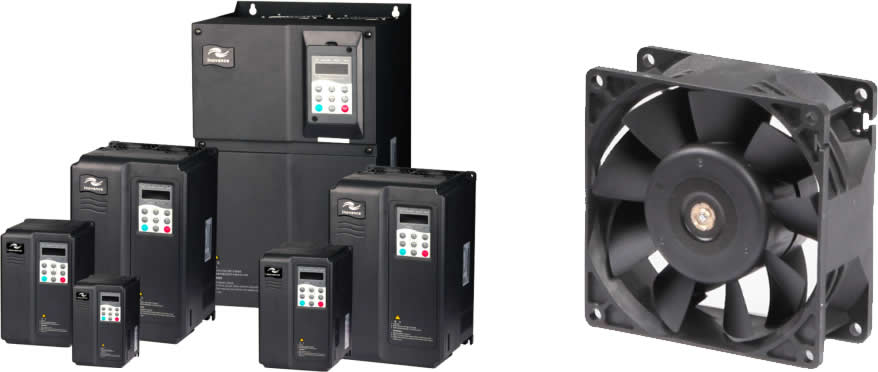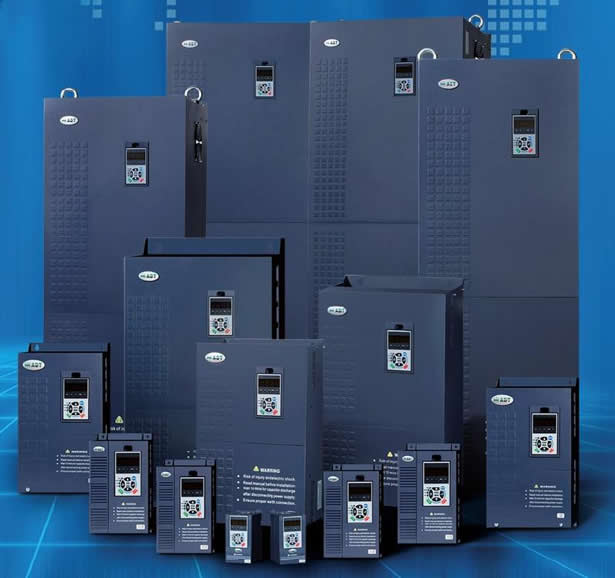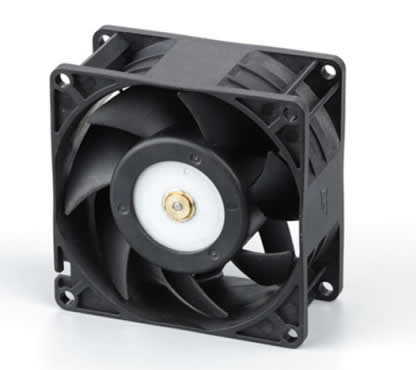Application
Frequency converter
Frequency converter (frequency transformer) is a power control device that converts the power frequency power supply to another frequency by using the on-off function of the power semiconductor device. The main circuit of the inverter can be roughly divided into two categories: the voltage type is the inverter that converts the DC of the voltage source to AC, the filter of the DC loop is the capacitor; the current type is the inverter that converts the DC of the current source to AC, The DC loop filter is inductance.

Inverter (Variable-frequency Drive, abbreviation: VFD), also known as variable frequency drive or drive controller, can be translated as Inverter (same as the English of the inverter). The frequency converter is a kind of adjustable speed drive system, which uses the frequency conversion drive technology to change the frequency and amplitude of the AC motor working voltage to smoothly control the speed and torque of the AC motor. The most common is that the input and output are AC/AC AC converter.

Before the advent of the frequency converter, the application of adjusting the motor speed needs to be completed through the DC motor, otherwise it is to use the VS motor with the built-in coupling machine to use the coupling machine to reduce the actual speed of the motor during operation. The frequency converter is simplified In addition to the above work, the volume of equipment has been reduced and the maintenance rate has been greatly reduced. However, there are high-frequency switching signals on the power line and motor line of the inverter, which will cause electromagnetic interference, and the power factor on the input side of the inverter is generally poor, which will generate harmonics on the power supply side.

The frequency converter has a wide range of applications, from small household appliances to large-scale mine grinders and compressors. About one-third of the world's energy is consumed by motors that drive fixed-speed centrifugal pumps, fans, and compressors, and the market penetration of inverters is still not high. The significant improvement in energy efficiency is one of the main reasons for using inverters.

Inverter (Variable-frequency Drive, abbreviation: VFD), also known as variable frequency drive or drive controller, can be translated as Inverter (same as the English of the inverter). The frequency converter is a kind of adjustable speed drive system, which uses the frequency conversion drive technology to change the frequency and amplitude of the AC motor working voltage to smoothly control the speed and torque of the AC motor. The most common is that the input and output are AC/AC AC converter.

Before the advent of the frequency converter, the application of adjusting the motor speed needs to be completed through the DC motor, otherwise it is to use the VS motor with the built-in coupling machine to use the coupling machine to reduce the actual speed of the motor during operation. The frequency converter is simplified In addition to the above work, the volume of equipment has been reduced and the maintenance rate has been greatly reduced. However, there are high-frequency switching signals on the power line and motor line of the inverter, which will cause electromagnetic interference, and the power factor on the input side of the inverter is generally poor, which will generate harmonics on the power supply side.

The frequency converter has a wide range of applications, from small household appliances to large-scale mine grinders and compressors. About one-third of the world's energy is consumed by motors that drive fixed-speed centrifugal pumps, fans, and compressors, and the market penetration of inverters is still not high. The significant improvement in energy efficiency is one of the main reasons for using inverters.
- Previous:
- UPS power supply





 QQ
QQ 0755-27973637
0755-27973637 Follow us
Follow us